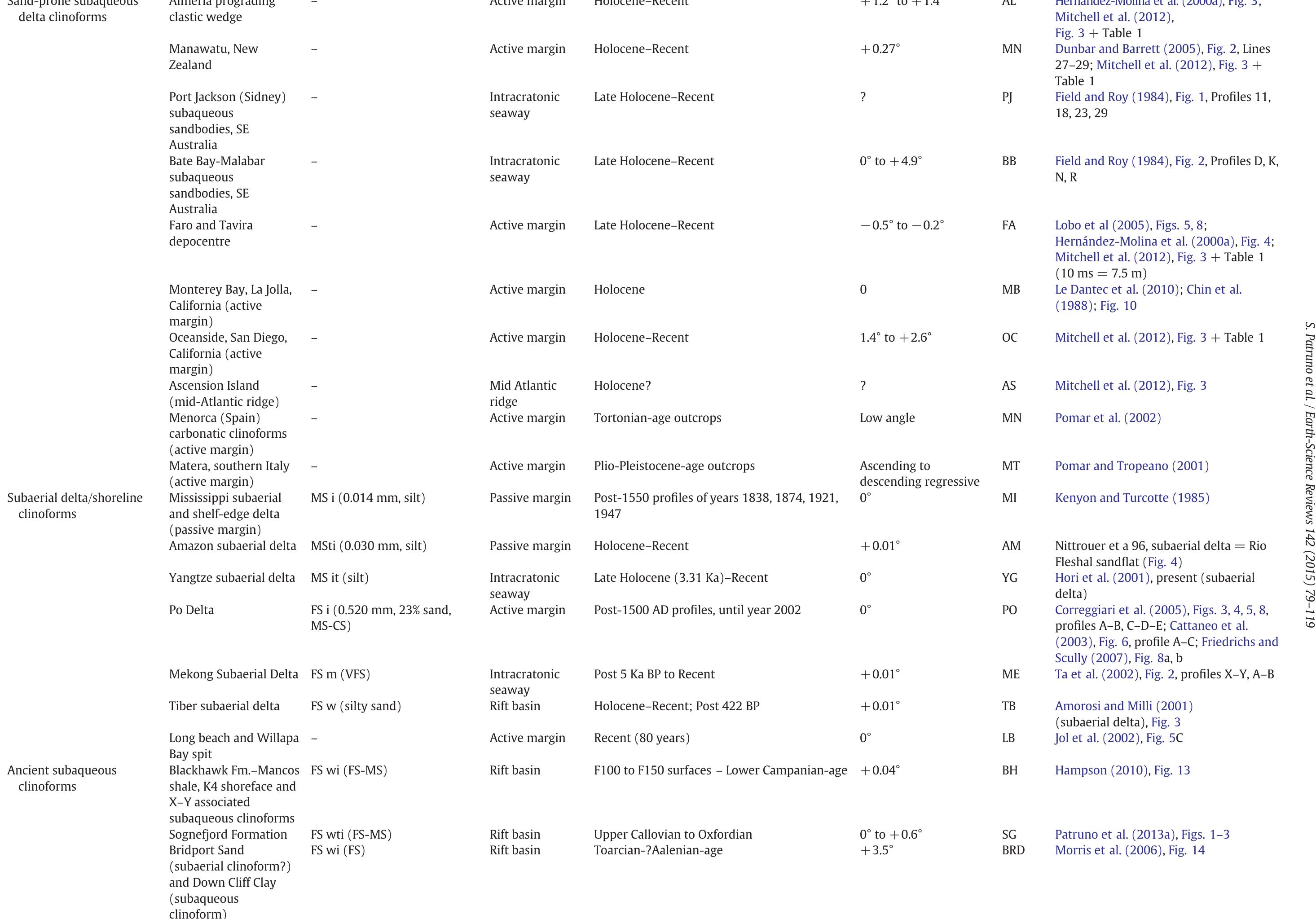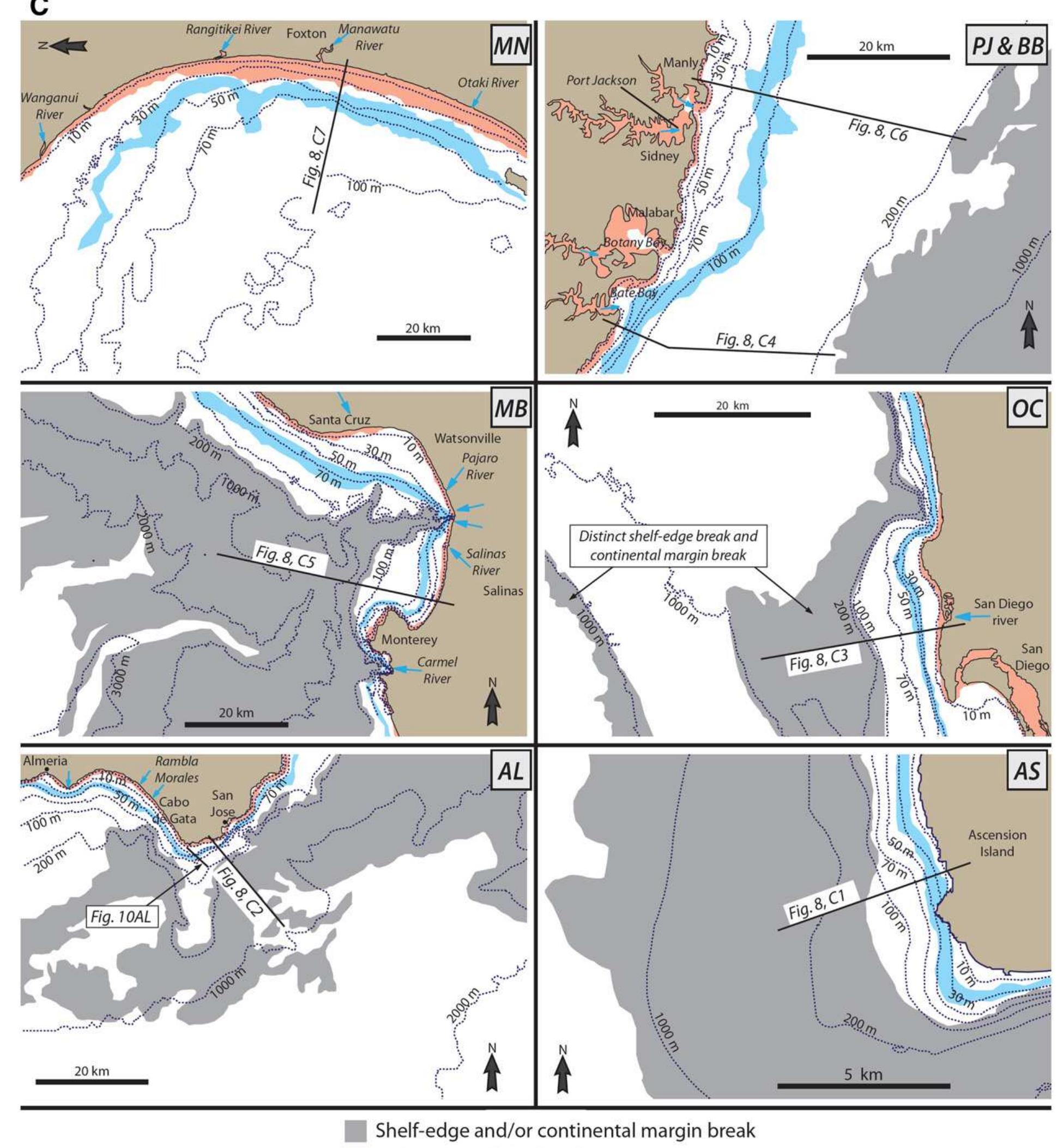Figure 13 – uploaded by Stefano Patruno

Figure 11 Depositional-dip profiles across ancient delta-scale subaqueous clinoforms: (BK) Upper Cretaceous Blackhawk Formation subaerial delta clinoforms and linked Mancos Shale sub- aqueous delta clinoforms, Western Interior Basin, onshore USA (after Hampson (2010)); (BR) Lower Jurassic Bridport Sand Formation subaerial delta clinoforms and linked Down Cliff Clay subaqueous delta clinoforms, Wessex Basin, onshore UK (after Morris et al. (2006); Hampson et al. (in press)); (SG) Upper Jurassic Sognefjord Formation subaqueous delta clinoforms, North Sea Basin, offshore Norway (after Patruno et al. (2013b)); (MN) Upper Miocene calcareous grainstones, Menorcan platform (Spain), Mediterranean Basin (after Pomar et al. (2002)). diverging from the topset to the foreset and converging again towards the bottomset (Kuehl et al., 1997). The clinoform foreset is formed by graded sandy-silty laminae interbedded with clay laminae. The coarsest-grained layers are presumably deposited by sediment-laden underflows generated during tropical storms, with up to 8 m thick mass flows created in the subaqueous delta front area by episodic earth- quakes or storms (Michels et al., 1998). These last deposits are imaged in seismic reflection profiles as transparent units (Palamenghi et al., 2011). The subaqueous clinoform is actively prograding every year by ca. 12-17 m across the Bengal Shelf. Sediment becomes increasingly finer-grained offshore and westwards, which in combination with analyses of seabed palaeocurrent indicators, suggests that subaqueous clinoforms have been fed by westward-flowing cyclonic currents that transport sediment fed by the Ganges-Brahamaputra river mouth alongshore and offshore (Kuehl et al., 1997). A large canyon, known as ‘Swatch of No Ground’, deeply dissects the shelf and the subaqueous
Related Figures (32)
































Connect with 287M+ leading minds in your field
Discover breakthrough research and expand your academic network
Join for free